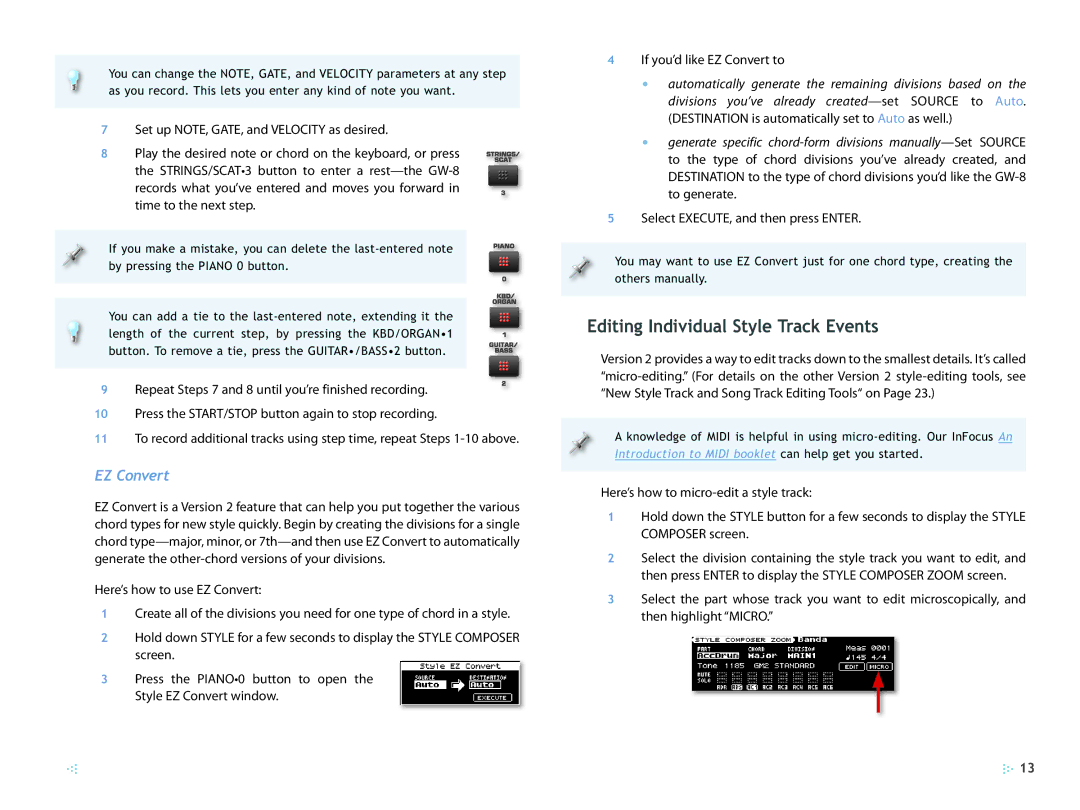
You can change the NOTE, GATE, and VELOCITY parameters at any step as you record. This lets you enter any kind of note you want.
7Set up NOTE, GATE, and VELOCITY as desired.
8 Play the desired note or chord on the keyboard, or press the STRINGS/SCAT•3 button to enter a
If you make a mistake, you can delete the
You can add a tie to the
9 Repeat Steps 7 and 8 until you’re finished recording.
10Press the START/STOP button again to stop recording.
11To record additional tracks using step time, repeat Steps
EZ Convert
EZ Convert is a Version 2 feature that can help you put together the various chord types for new style quickly. Begin by creating the divisions for a single chord
Here’s how to use EZ Convert:
1Create all of the divisions you need for one type of chord in a style.
2Hold down STYLE for a few seconds to display the STYLE COMPOSER screen.
3Press the PIANO•0 button to open the
Style EZ Convert window.
4If you’d like EZ Convert to
•automatically generate the remaining divisions based on the divisions you’ve already
•generate specific
5Select EXECUTE, and then press ENTER.
You may want to use EZ Convert just for one chord type, creating the others manually.
Editing Individual Style Track Events
Version 2 provides a way to edit tracks down to the smallest details. It’s called
A knowledge of MIDI is helpful in using
Here’s how to
1Hold down the STYLE button for a few seconds to display the STYLE COMPOSER screen.
2Select the division containing the style track you want to edit, and then press ENTER to display the STYLE COMPOSER ZOOM screen.
3Select the part whose track you want to edit microscopically, and then highlight “MICRO.”
![]() 13
13
